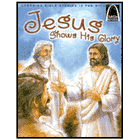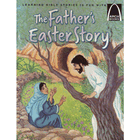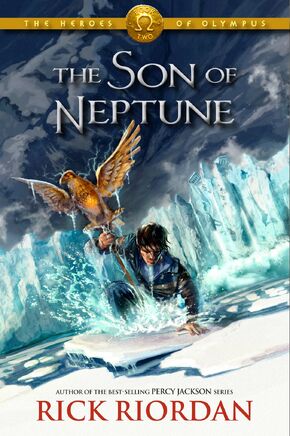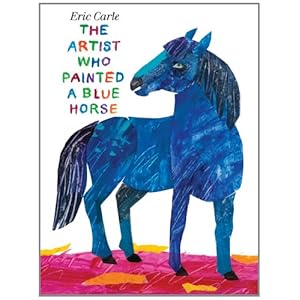A treat is in store for you today! My friend and colleague in SCBWI (The Society of Children's Book Writers and Illustrators), Jonathan Schkade, is interviewed. Jonathan and I meet every month with our powerhouse writing group, The Bookends. On a personal note, he has been such a rich resource, and his critiques of my work are spot-on. Always.
 Jonathan Schkade (pronounced "Skah-dee," rhymes with "body") at least halfway grew up in northern Texas. Now he lives in the village of Hamel, Illinois, with his sparkling wife, Kristi, and his sweet little daughter. Despite his best efforts, he graduated from Concordia University in Seward, Nebraska, with a degree in elementary education and a major in procrastination.
Jonathan Schkade (pronounced "Skah-dee," rhymes with "body") at least halfway grew up in northern Texas. Now he lives in the village of Hamel, Illinois, with his sparkling wife, Kristi, and his sweet little daughter. Despite his best efforts, he graduated from Concordia University in Seward, Nebraska, with a degree in elementary education and a major in procrastination.He's published five books with Concordia Publishing House, including Icky Sticky, Hairy Scary Bible Stories (2011) and the Arch Book The Father's Easter Story (2011), and has written for CPH's day school religion curriculum, Happy Times magazine, My Devotions, and Portals of Prayer.
While getting himself into and out of messes in his books fills up most of his time, he also loves singing in choir, eating tater tots, playing as many board games as possible, and daydreaming for fun and profit. In addition, he's a member of the Society of Children's Book Writers and Illustrators (SCBWI). Visit him at www.jonathanschkade.com (aka ickystickybible.com).
NS You are a prolific author. How did you begin this journey of letters? Did the literary inkling reach back to your childhood?
JS I was something of a latecomer to the idea of writing as a possible profession. Early on, while I wrote my share of assigned stories, poems, and essays for school, it never occurred to me to write them on my own time. However, during my freshman and sophomore years in high school, I started writing lots of poetry. Most of the poems rhymed, some were funny, and a handful were pretty good. Through these and various school assignments, I gradually learned that a few English language tools came naturally to me: the rhythm of words, solid usage and mechanics, and transitional phrases.
To this day, these elements are the foundation of everything I write. I have to credit this to reading tons of books as a kid. I truly believe natural talent and intentional instruction are great but that the lion’s share of writing skill is absorbed by reading the words of others.
 Specifically, two projects in high school made me take myself more seriously as a writer. One was called “The Man,” a parody of Poe’s “The Raven,” in which a bird obsessed with eating boar rants about the crazy guy inside the house. This was done for a class assignment and made me realize how much fun writing could be. The second project was a Star Trek book I began writing. Though I never came close to finishing it, this was a wake-up call that I might actually be able to write about things I enjoy and get paid for it.
Specifically, two projects in high school made me take myself more seriously as a writer. One was called “The Man,” a parody of Poe’s “The Raven,” in which a bird obsessed with eating boar rants about the crazy guy inside the house. This was done for a class assignment and made me realize how much fun writing could be. The second project was a Star Trek book I began writing. Though I never came close to finishing it, this was a wake-up call that I might actually be able to write about things I enjoy and get paid for it.JS By the time I got to college, I knew beyond a doubt that I wanted to be a writer someday, but my plans for how and when were a little fuzzy. While working as a teacher and then a proofreader and copy editor, I kept writing and eventually saw my first three books and some smaller items published. But I knew that I wanted to write a lot more and that every year I waited meant another book or two that I would never have time to write. About two years ago, though it was a good job with great co-workers, I just felt in my heart and my gut that I had no other choice. I had to write.
In the end, it was easier for me to become a full-time writer because (a) we had prepared for this financially, (b) my wife completely supported my decision, and (c) even though we hoped for the best, we planned for the worst. It’s hard to walk away from a regular paycheck, and it’s probably not the wisest course of action for a lot of people. For me, though, it was definitely the right move.
So, I suppose my advice for others is this: it’s time to quit your day job when you’re (a) prepared to face the consequences of failure, (b) can continue meeting your financial and familial obligations, and (c) feel deeply like you have no other choice.
NS Tell us about books published thus far in your career.
JS I’ve had five children’s books published. In a little bit, I’ll talk more about the most recent book, Icky Sticky, Hairy Scary Bible Stories. One of the others, Jesus Teaches Us to Pray, is a picture book about prayer and was part of a short-lived series.
The final three books are installments in a series of short, rhyming children’s Bible story books called Arch Books. These are Get Up, Lazarus! (the story of the raising of Lazarus), Jesus Shows His Glory (Jesus’ Transfiguration), and The Father’s Easter Story (the story of Easter from God the Father’s point of view). Concordia Publishing House advertises these books as cheaper than most greeting cards, so they’re a quick and inexpensive way to teach Bible stories.
An amazing fact about this series—especially given that many people haven’t heard of it—is that it’s one of the best-selling book series of all time (several online lists rank it as #32 or #33). With over 60 million copies sold, the series ranks just below the Little House books and a few spots above the Hardy Boys. Crazy! Of course, my three books only account for a small part of that.
 JS I never really grew up, and this book shows it Highlighting the silliest, scariest, and stinkiest stories in the Bible, Icky Sticky, Hairy Scary Bible Stories (128 Pages) is a collection of 60 short story- poems and surprising Scripture sayings. Written especially for kids in grades 2-4, this book dusts off little-know stories and showcases well-known ones in a new light.
It's gross, but it's not a gross-out book. It's funny, but it's respectful of the source material. This book emphasizes kid-friendly aspects of stories; it does not alter their content.
JS I never really grew up, and this book shows it Highlighting the silliest, scariest, and stinkiest stories in the Bible, Icky Sticky, Hairy Scary Bible Stories (128 Pages) is a collection of 60 short story- poems and surprising Scripture sayings. Written especially for kids in grades 2-4, this book dusts off little-know stories and showcases well-known ones in a new light.
It's gross, but it's not a gross-out book. It's funny, but it's respectful of the source material. This book emphasizes kid-friendly aspects of stories; it does not alter their content.Artist Tuesday Mourning (perhaps best known for illustrating the Princess Peepers books) channeled her inner Shel Silverstein with black-and-white line art that makes kids smile and gawk. Filled with whiny prophets, stinky feet, snakes and pigs, and bugs to eat, Icky Sticky, Hairy Scary Bible Stories shows that no matter what our problems, we are never too icky, too sticky, to hairy, or too scary for God.
JS So far, it’s been great. Concordia is a medium-size religious publisher of books, curriculum, periodicals, and other resources for the Christian market. They have a pretty specific vision of what they’re looking for in terms of theological content and format. Since I worked there for a number of years, I had an insider’s familiarity with their product lines. This made it much easier to fit books I was interested in writing within the constraints of their publishing goals.
At conferences and in interviews, editors always stress how important it is to familiarize yourself with the books of publishers before you submit. They are so right.
I know guys aren’t supposed to use clothing metaphors, but here’s my lame attempt. A publisher is like a fashionista with a closet full of clothes (i.e., books). Even though your book is great and new and terrific, if it doesn’t accessorize well with anything in the publisher’s closet, they’re unlikely to buy it. If your book complements their favorite jeans, they’ll have a lot better idea of when and where to show it off (i.e., to sell and promote it). So, do your homework!
Also, I would be remiss if I didn’t say that my editor is a wonderful lady who always treats me with respect and kindness. I never doubt that she is a dedicated advocate for me and my books (and that goes for the rest of the Concordia team as well). In this business, that kind of support is invaluable.
NS So many people want to know the answer to this one: How and/or where do you find the inspiration for your stories within the religious experience? And do you plan on writing any secular books?'
Inspiration is easy. Execution is hard.
 JS I don’t say that just to be cute. Finding ideas to write about or—as is often the case with my religious writing—new angles for telling old stories has never been hard for me. What’s hard is plopping myself down in the chair and making myself get the work done.
There always a bit of nagging concern that what I write won’t be quite as brilliant as I know it can be. I have a big enough ego to believe it will be good, but good isn’t good enough. I want excellent. I want perfect. And perfect is a pretty unforgiving standard to judge yourself against. So I have to put that aside, at least until I get to the revision stage. ;)
JS I don’t say that just to be cute. Finding ideas to write about or—as is often the case with my religious writing—new angles for telling old stories has never been hard for me. What’s hard is plopping myself down in the chair and making myself get the work done.
There always a bit of nagging concern that what I write won’t be quite as brilliant as I know it can be. I have a big enough ego to believe it will be good, but good isn’t good enough. I want excellent. I want perfect. And perfect is a pretty unforgiving standard to judge yourself against. So I have to put that aside, at least until I get to the revision stage. ;)Still, to take the question head on, I’ll say that getting ideas for religious works isn’t too different from getting secular ideas. I find a story that I have to tell. For religious works, the story is simple because it’s tied in with my personal faith beliefs and the biblical message. As for how to tell it, either it will demand to be told a certain way, or I’ll ask myself what the most effective approach would be for the target audience. What kind of wrapper can I put this story in that will make them most interested in devouring it? That was a pretty strong factor in developing the concept and format of Icky Sticky.
As to your final question, since it’s about secular books, I will consult my pagan Magic 8-Ball. It says, “Outlook good.” There you have it. Who am I to argue with a plastic sphere?
Thanks, Nancy, and a big howdy to all your readers!
And to you, Jonathan! You are an inspiration to so many others. And, again, on a personal note, to me as well. All best wishes to you as you continue this journey so many of us have chosen around the profession of writing.
Jonathan's books and more information about him can be found below:
Jonathan is a contributor to Pots 'n Pens, a blog about cooking and writing. Enjoy recipes, interviews, and more at http://potsnpens.blogspot.com/.
 (Please see video of the school and The Children's Book Project in action at bottom of post.)
(Please see video of the school and The Children's Book Project in action at bottom of post.) In the underprivileged area of Vingunguti , books in the local language of Kiswahili are a luxury. In fact, the Children’s Book Project, which provides the school and 110 other school libraries with books, is the primary developer of children’s storybooks in Kiswahili.
In the underprivileged area of Vingunguti , books in the local language of Kiswahili are a luxury. In fact, the Children’s Book Project, which provides the school and 110 other school libraries with books, is the primary developer of children’s storybooks in Kiswahili.  Grade 3 student Balozi Tesha is among the students visiting the library one afternoon. He is reading his favorite book, Maandazi Matamu. It’s a book about snacks and he says he likes it because it teaches how to eat a balanced diet. Tesha speaks in confident, even tones as he explains in Kiswahili that if it were not for the school’s library, he would go to the national library.
Grade 3 student Balozi Tesha is among the students visiting the library one afternoon. He is reading his favorite book, Maandazi Matamu. It’s a book about snacks and he says he likes it because it teaches how to eat a balanced diet. Tesha speaks in confident, even tones as he explains in Kiswahili that if it were not for the school’s library, he would go to the national library. As a testament to the students’ dedication to the program, it is the students who are responsible to help clean, maintain and operate the library. The program is paying dividends and Miembeni primary regularly comes out with several awards given out by the Children’s Book Project each year to recognize children.
As a testament to the students’ dedication to the program, it is the students who are responsible to help clean, maintain and operate the library. The program is paying dividends and Miembeni primary regularly comes out with several awards given out by the Children’s Book Project each year to recognize children.































